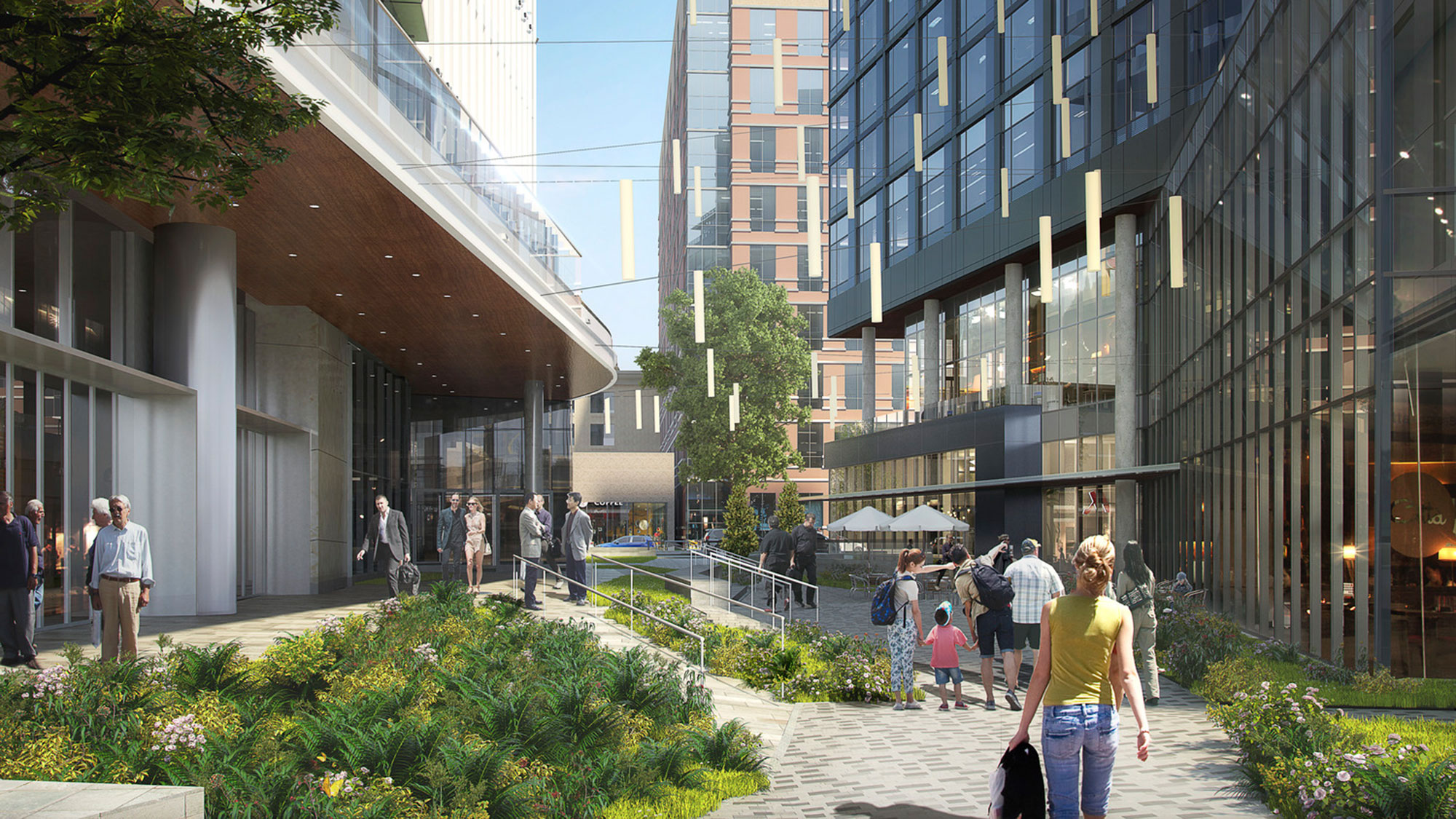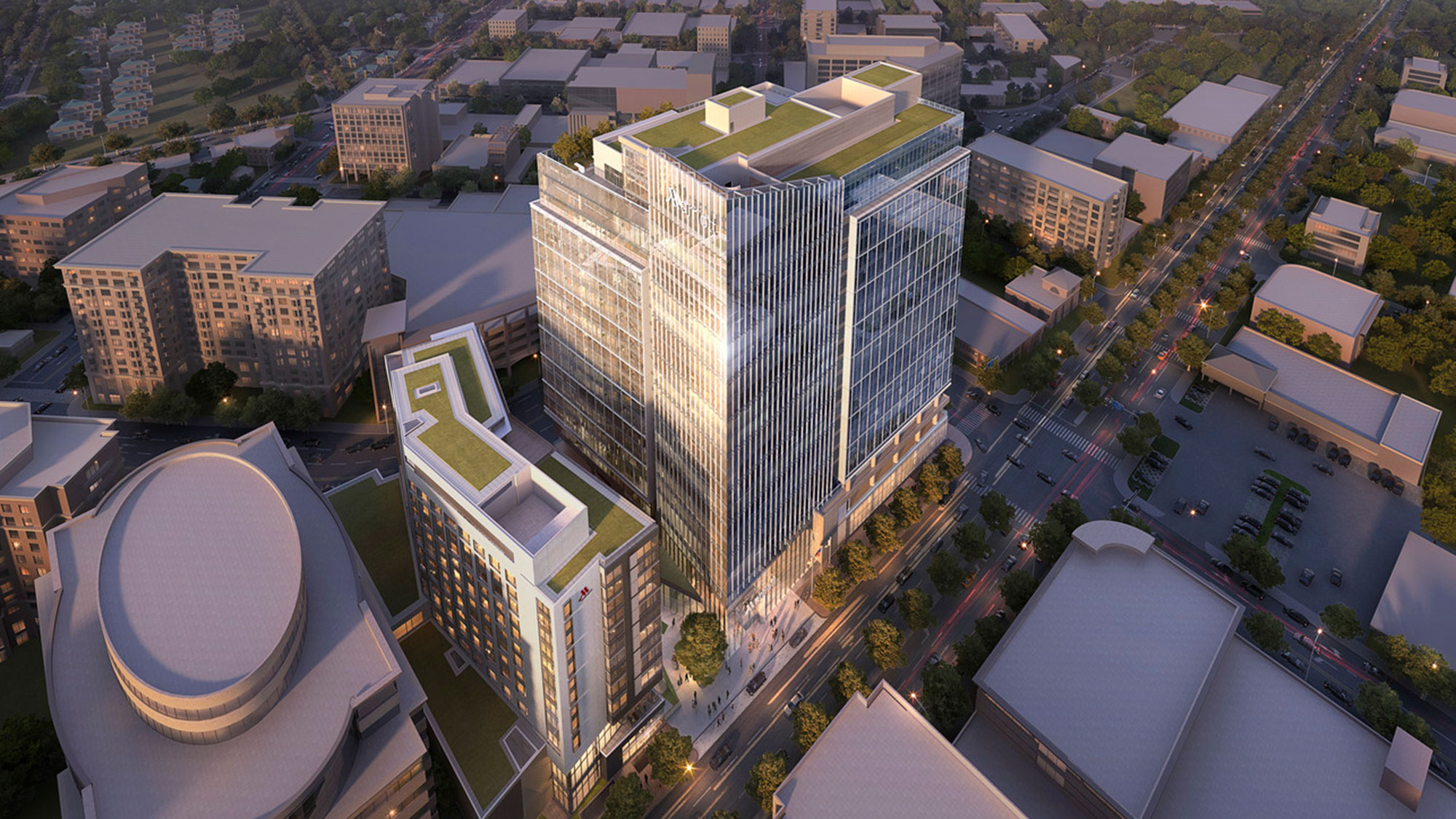Inside the World’s Largest Hospitality Company
June 24, 2021
Editor's note: this podcast episode originally appeared on the Gensler Design Exchange podcast. In this episode, Gensler’s Jordan Goldstein interviews our client Tim Grisius, Global M&A and Real Estate Officer at Marriott International about Marriott’s evolution to become the world’s largest hospitality company; the hospitality industry’s path to recovery; Marriott’s new headquarters; and more.
The hospitality industry was one of the hardest hit during the pandemic because of the dramatic slowdown in business and leisure travel. Ongoing challenges of global wellness and the climate crisis pushed the industry to ask what else hotels can be for people and communities. For architects and designers working in the hospitality industry, we’re asking how this might affect our clients. What role design can play in positively reshaping hotels? How can design promote the health and well-being of guests? Can we identify new approaches to the wellness and sustainability of place?
The hospitality industry, being one of the most human-intensive industries, has an opportunity to reinvent itself with the aim of focusing on what matters most — connecting people with place in the most sustainable way, with human interaction at the core. There is no denying that people eventually will resume traveling and return to hotels — especially as summer kicks off with many cities lifting COVID restrictions. What’s also likely is that a new crisis will emerge someday, demanding that hotels be ready. The pandemic experience gives us the opportunity to rethink the future of hospitality.
In this Gensler Design Exchange podcast episode, we’re rebroadcasting an exclusive interview between Jordan Goldstein, Gensler’s Global Director of Design, and our client Tim Grisius, Global M&A and Real Estate Officer at Marriott International. Together they discuss Grisius’ career; the evolution of Marriott from a root beer stand to the largest hospitality company in the world; the path to recovery for the hospitality industry; Marriott’s innovative, new Gensler-designed headquarters; and much more.
What’s next for hotels?Whether it’s a health crisis, wildfire, or natural disaster, hotels will continue to be the place that puts personal interactions and emotional connections at its core to enhance the lives of all humankind. This is the moment to expand that role and prepare for the next challenge.
According to the Gensler Hospitality Pulse Survey 2020, just 12% of respondents surveyed want hotels to operate how they did before the pandemic. So, how can hotels rethink the guest experience to meet new expectations and deliver an exceptional guest experience in a post-COVID era? How can we create spaces that are flexible and support a business model that is responsive to the next crisis? Can meeting spaces be resilient enough to host a wedding or convention, but serve as a medical triage space in a future emergency? This type of agility can provide a real value for hotels and their communities.
Tactically, hospitality-driven experiences are no different than experiences a workspace can offer. If merging the best elements of workplace and hospitality can attract more people back to your office or hotel and create unique opportunities for connection, we should employ these integrated design solutions.
Marriott’s new headquartersLocated just 800 feet from the Bethesda Metro Station in Bethesda, Maryland, Marriott’s new headquarters, designed by Gensler, will deliver the first full service hotel in Bethesda since 1982, along with the highest quality office building in the market. The design incorporates today’s most efficient design systems to achieve LEED certification. The integrated retail and plaza areas will include a pedestrian link from Woodmont to Wisconsin Avenue, activating the site and creating a sense of place in the reenergized Bethesda Triangle. This legacy project will stimulate economic growth and enhance Bethesda’s cultural experience.

The Marriott International Headquarters will be located at 7750 Wisconsin Avenue, and is just a short walk from the Bethesda Metro, an ideal location for their 3,500 employees and visitors. The site is in a perfect position to accommodate Marriott’s vision for a $600 million urban campus with an attractive, 238-room Marriott flagship hotel.
With over 8,000 square-feet of flexible space for meetings, conferences, and banquets, the flagship Marriott Hotel will provide both businesses and residents of Bethesda with an amazing place to host events. The hotel will also offer exceptional dining and social amenities, including a ground-floor restaurant offering outdoor dining on the pedestrian plaza, a specialty coffee shop, and a seasonal rooftop-dining terrace.

The new headquarters building will provide a cutting-edge workspace for associates, offering state-of-the-art technology, modern amenities, and access to a range of transportation options that includes the adjacent Bethesda Metro station. The new headquarters building will meet “green” building standards and allow abundant natural light as well as provide the company’s associates new opportunities for flexible, collaborative work spaces. The headquarters building will also offer a childcare center for associates’ children, a fitness center, cafeteria, modern and flexible meeting and conference space, and accessibility.
This seven-parcel site assembled at the intersection of Woodmont, Wisconsin and Norfolk Avenues, just 800 feet from the Bethesda Metro Station, is on its way to becoming Bethesda’s next world class destination. This legacy project will stimulate economic growth and enhance Bethesda’s cultural experience.
For media inquiries, email .
